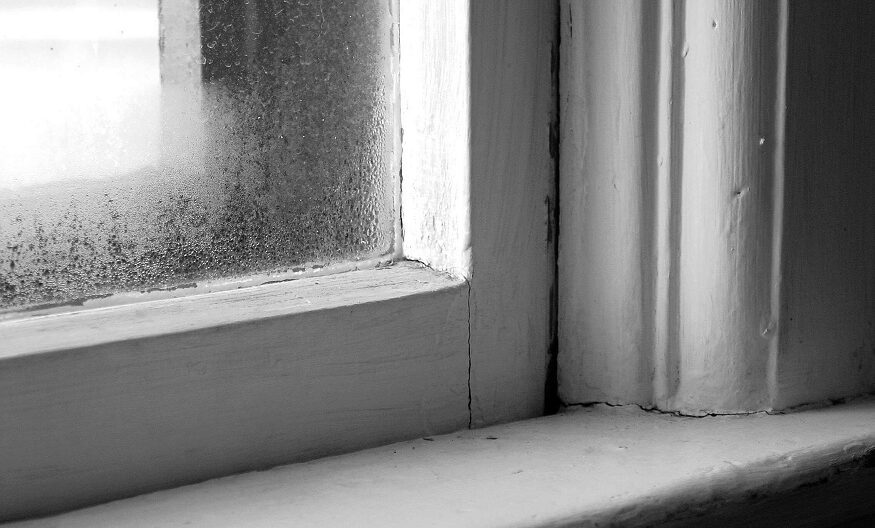
As we enter the colder months of the year, more and more homes across the country find themselves tackling the issue of condensation. Condensation may appear harmless, but it can cause major issues for properties if not dealt with properly.
Condensation, quite simply, is the result of water vapour and warmer air condensing on colder surfaces forming moisture. As the temperature outside drops in autumn and winter and people start heating up their homes more, this phenomenon becomes more common. It is caused by activities like showering, cooking on the hob, and simply breathing.
It might not sound serious, but condensation can be a leading cause of mould and damp, often found around windows and doors, and can have a range of implications for your health and that of your property.
Why is it an issue?
If allowed to sit for prolonged periods, condensation can form black mould and damp. If mould forms unnoticed behind furniture, it can pose potential health risks as the fungi that forms as a result of the mould releases spores into the air.
If inhaled, these spores can cause health issues for people with allergies,asthma or breathing difficulties. Young children and the elderly are also particularly vulnerable. It can cause a runny or blocked nose, irritation to the eyes and wheezing. Those who suffer badly from asthma may also be susceptible to asthma attacks. It is also possible to develop a severe mould infection in the lungs, although this is rare.
Aside from the health risks, condensation and mould also pose a threat to your property. Mould will stain walls and can rip off plaster and paint when removed. Moisture trapped behind wallpaper or paint can cause swelling and if this moisture penetrates further into the walls, structural decay can become a possibility. Timber frames can rot and crumble,and cladding can be damaged resulting in costly repairs.
How do I get rid of it quickly?
You can invest in special mould removing sprays which you can find in home stores. Along with a cloth or sponge you can spray the mould and scrub away at it to remove it from any frames and walls. It is recommended you wear a mask and gloves when doing this.
You can also make a homemade solution consisting of one part white vinegar and one part water. Spray this on a wall and leave overnight. The following day, wipe away the mould with a damp cloth and then clean off any moisture with a dry cloth.
How do I prevent it coming back?
Some anti-mould sprays are anti-microbial so will make it more difficult for the spores to settle again, although this alone usually won’t be enough to stop it all together.
There are many simple steps you can take to reduce the amount of condensation in your home. Simply opening the windows regularly to increase airflow will help prevent moisture from settling on surfaces. When you can’t open the windows, turning up the heating will make it harder for water vapour to condense.
When cooking, using an extractor fan will suck steam away and putting lids on pans will also reduce the amount of steam released into your home.
Investing in dehumidifiers is a good option too. You can either invest in larger dehumidifiers that you can plug into the mains or smaller, disposable ones that you can tactically position around your home, to draw moisture out of the air.
Home improvements, such as upgrading to double or triple glazing will make it harder for condensation to form on windows due to the increased insulation and reduced temperature between the room and the internal window. Insulated walls are also less susceptible to condensation.
This article was written by an online estate agent House Sales Direct. If you wish to sell your house fast and for free, then head over to the House Sales Direct website for more property related information and enquiries.</p 
Infographic created by ISI Building Products, Industry-Leading Under Slab Vapor Barrier Engineered for Performance
